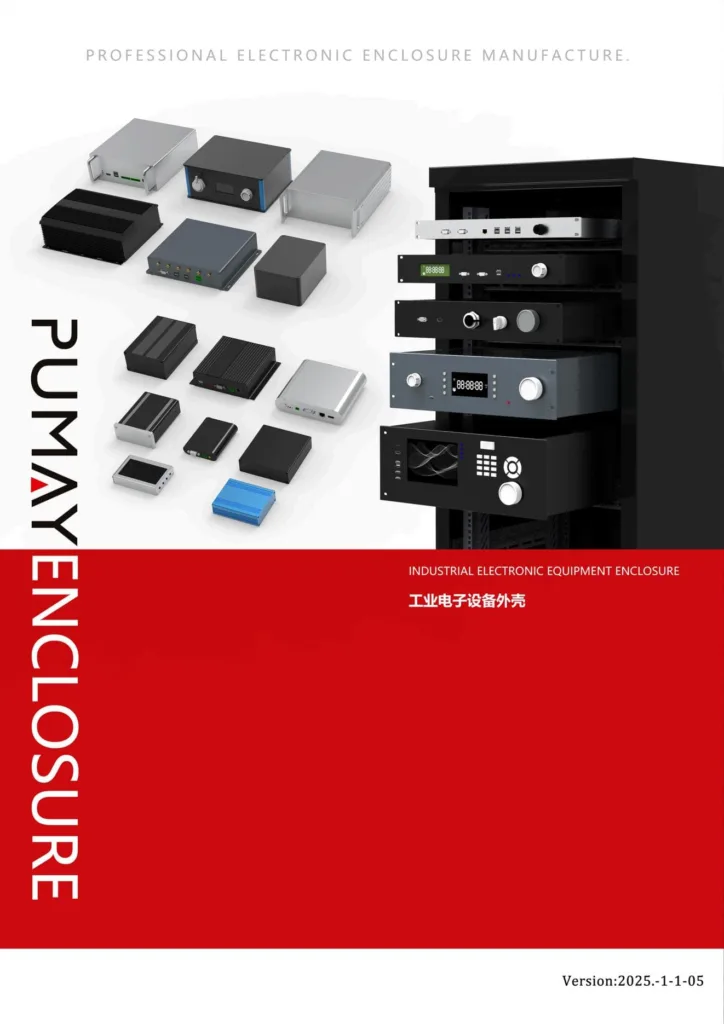Selling to Europe or the US feels complex. You're worried about your product being rejected by customs or failing compliance tests because you missed a critical certification for your enclosure.
Key certifications are CE for Europe, RoHS for hazardous substances, and UL for North America. While the enclosure itself doesn't always need a mark, its materials and design are critical for your final product's compliance, and your supplier must provide proof.
 “Global certifications for rackmount enclosures”
“Global certifications for rackmount enclosures”
Understanding these requirements can feel overwhelming. It’s not just about ticking boxes; it’s about ensuring your product is safe, legal, and ready for the market. The key is to see your enclosure manufacturer not just as a metal fabricator, but as a compliance partner. They should provide you with the documentation and design features you need to pass your own certifications smoothly.
Do I need CE1 marking for a rackmount enclosure itself?
You're targeting the European market. The CE mark seems mandatory for everything, but you're unsure if it applies to a simple metal box, causing confusion and potential project delays.
A bare, unpowered rackmount enclosure is a "component" and does not typically require its own CE mark. However, it must be designed to help your final electronic product meet key CE directives, like those for EMC and electrical safety.
 “Does a rackmount enclosure need a CE mark?”
“Does a rackmount enclosure need a CE mark?”
The Enclosure's Role in Your CE Mark
This is a very common point of confusion. I often have to explain to clients that they will be the ones applying the CE mark to their final, finished product. My job, as the enclosure manufacturer, is to give them an enclosure that makes it possible for them to meet the requirements. Think of it this way: you can't get a CE mark for a single screw, but that screw is critical to the safety of the final machine. The enclosure is the same. It plays a vital support role for two main CE directives. First is the EMC Directive2, which governs electromagnetic interference. A well-designed enclosure with proper EMI/RFI shielding is essential for your product to pass EMC testing. Second is the Low Voltage Directive3 (LVD), which covers electrical safety. Your enclosure contributes by providing secure grounding points and being made of materials that are structurally sound. Your final technical file for the CE mark will need to include details about the enclosure, which we help you prepare.
| Directive | Your Final Product's Responsibility | Our Enclosure's Contribution |
|---|---|---|
| EMC Directive (2014/30/EU) | Must not emit excessive EMI and must be immune to interference. | Provides a shielded Faraday cage with conductive gaskets to block EMI. |
| Low Voltage Directive (2014/35/EU) | Must be safe from electrical shock and other hazards. | Offers reliable grounding points and durable construction. |
What is RoHS4 and why does it matter for my enclosure?
You hear "RoHS" and think it only applies to PCBs. Sourcing a non-compliant enclosure could force a costly last-minute redesign and completely block your access to major markets like the EU.
RoHS (Restriction of Hazardous Substances) limits materials like lead and cadmium. Your aluminum enclosure, its finish, and even its silk-screen ink must be RoHS compliant. You need a formal declaration from your supplier to prove it.
 “RoHS compliance for aluminum enclosures”
“RoHS compliance for aluminum enclosures”
More Than Just Electronics
RoHS is about health and environmental safety, and its rules apply to every single component in your final product, including the enclosure. This directive restricts the use of ten specific substances. For an enclosure, the most relevant ones are lead (in some aluminum alloys), mercury, cadmium, and hexavalent chromium. Hexavalent chromium is a big one to watch out for. It was used in older types of chromate conversion coatings for corrosion protection. Today, we use modern RoHS-compliant alternatives that are free of this substance. When we manufacture an enclosure at PUMAYCASE, we ensure the raw aluminum alloy, the anodizing or painting process, and any inks used for printing are all fully RoHS compliant. To help our clients, we provide a formal Certificate of Compliance for the enclosure. This is a critical document that you will need to include in your technical file for your own product's CE marking. It’s our job to make this process simple and transparent for you.
How do IP ratings and UL listings apply to enclosures?
Your instrument needs protection from dust and water, or you're planning to sell in North America. You're confused about whether IP ratings or UL marks come from the enclosure supplier or you.
An IP (Ingress Protection) rating is a design feature of the enclosure itself, often verified by the supplier. A UL listing is a safety certification for your entire end-product, though using UL-recognized materials can simplify your approval process.
 “IP ratings vs. UL listing for enclosures”
“IP ratings vs. UL listing for enclosures”
Protection vs. Safety Certification
It's important to separate these two concepts because they work very differently. An IP Rating5 defines how well an enclosure is sealed against solids (like dust) and liquids (like water). For an engineer like Jeff, whose instruments are used in the field, an IP67 rating might be a key requirement. This rating is a feature of the enclosure's design, achieved with precise manufacturing and high-quality silicone gaskets. At PUMAYCASE, we design specific enclosure models to meet IP67/IP68 standards and can provide our own test reports. This saves our clients the significant time and expense of conducting their own water ingress testing.
A UL Listing, on the other hand, is a comprehensive safety certification for the entire product, primarily for the North American market. UL is concerned with risks of fire and electric shock. The final product gets the UL mark, not the bare enclosure. However, the enclosure plays a supporting role. During your UL certification process, the UL inspector will examine how your enclosure provides grounding, isolates electrical components, and handles heat. While an enclosure itself is rarely a "UL Recognized Component," using materials that are (like specific plastics or insulation) can make your certification process much smoother. Our role is to provide you with all the material specification sheets you need for your UL submission.
Conclusion
Navigating global certifications means understanding CE, RoHS, IP, and UL. The key is to partner with a manufacturer who provides compliant materials, robust designs, and all the necessary documentation.
Understanding CE certification is crucial for ensuring your product meets European safety standards. ↩
The EMC Directive is key to ensuring your product does not interfere with other devices. ↩
Understanding this directive helps ensure your product is safe from electrical hazards. ↩
RoHS compliance is essential for environmental safety and market access in the EU. ↩
IP ratings are crucial for determining how well your enclosure protects against dust and water. ↩





